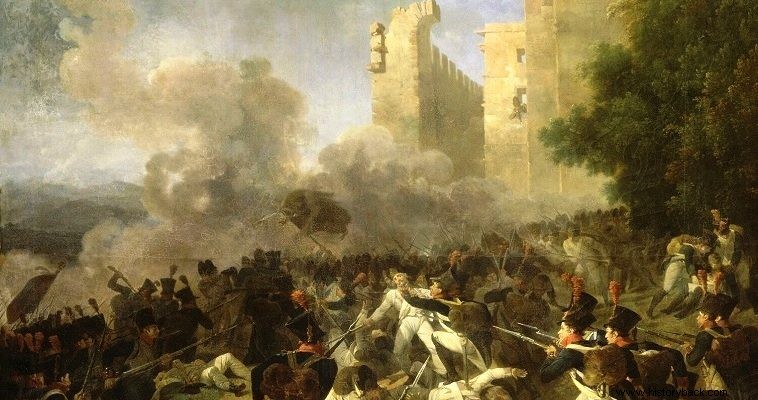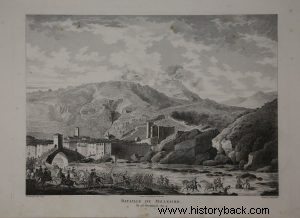
In 1796 Napoleon was fighting in the Italian North at the head of the Army of Italy, with a strength of 40,000 men. After their victory at Montenotte the French moved to occupy Dego. The business was expected to be easy. But it turned out to be exactly the opposite...
Napoleon sent General André Massena's division to occupy Dego and that of Pierre Ozereau to occupy neighboring Milesimo. In Milesimo was the reduced strength Austrian brigade of Italian-born General Giovanni di Provera.
Provera had small forces. Its bulk was made up of men of the Gyulai Free Corps. It also had two grenadier companies of the 27th Infantry Regiment, reinforced at the last moment with the 3rd Grenadier Battalion of the allied army of the kingdom of Piedmont. The Austrian general, knowing that he would not be able to withstand the French attack, withdrew his forces to the ruined castle of Koseria where he fortified himself.
On April 13, 1796 Napoleon immediately ordered the divisions of Haussereau and Meunier to attack the Austrians and their Italian allies. The French advanced with yachts in phalanx formation covered by snipers against their few opponents, confident of their victory.
However, the defenders did not share the French optimism and when the French rushed out they greeted them with heavy fire, cutting them down. "There is nothing more terrible than this attack," said the wounded French colonel Joubert.
Ozero had 9,000 men and 23 guns, compared to Provera's only 988 men and two guns. Nevertheless, although overwhelmingly outnumbered, the French did not succeed in the slightest, fighting all day. Only towards evening did they manage to take over part of the Austrian positions.
However, Provera's problem was not that, as the positions lost were not crucial. His problem was that the ammunition, the little food and especially the water that was available was running out. Fatefully, the next day, when he was called by Ozero to surrender the castle, he was forced to submit.
French losses were heavy and exceeded 700 dead and wounded compared to only 96 for the Austrians and Italians. The whole battle wouldn't be particularly important if it wasn't connected to one of Napoleon's "cheats".
The French general informed the government in Paris of the serious "battle of Milesimo" in order to justify the losses and the delay in the execution of his plans. He later admitted that it was his mistake to order an attack against entrenched opponents who would have surrendered anyway due to lack of food and water.
But he preferred to sacrifice his men for no real reason. In the battle, among the dead were the French general Kenny, the colonel Banet, but also the brave commander of the 3rd Grenadier Battalion of Piedmont del Carretto.

